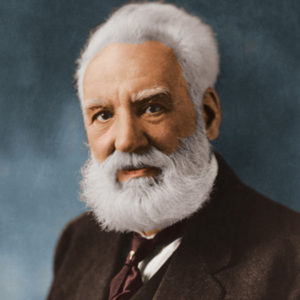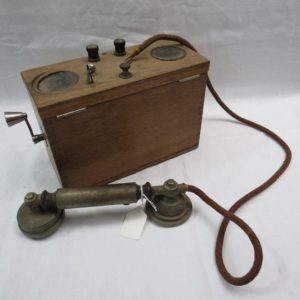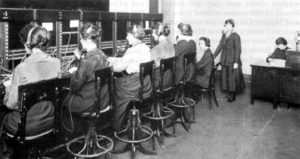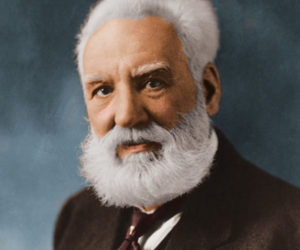Many organisations offer their employees the opportunity to work at different locations. Although everyone can…
Part 2 | Rapid growth of telephony
2.
Part 2 | Rapid growth of telephony
In this series we explore the history of telecommunications in all its facets.

In the decades that have passed since Bell claimed his invention the telephone made significant progress. The American Telephone and Telegraph Company (AT&T), owner of the Bell Telephone Company since 1899, worked hard to expand their cable network to all major cities in the country. The rapid growth of telephony could not be missed, and the immense popularity of the telephone in the USA can be illustrated by the increasing number of phones; in 1900 there were 600.000 phones in American households, but just 5 years later this was up to 2,2 million, and more than tripled to 7 million in 1910!
During the first decade of the 20th century telephony took off in Europe, especially in Germany and England. In 1910 there were 3 milion telephones in European households.
The influence of World War 1
The fact that the telephony rapidly evolved to a popular mean of communicating became very clear when World War 1 broke out in Europe. It was the first war since the invention of the telephone. Up until then officers mainly communicated through 
You often hear that wars accelerate inventions and innovation. Indeed, in 1915 the first field telephones could already be spotted on the battlefield. These were much lighter than radios en could easily be transported over long distances. By 1917 the Germans had laid 319.000 miles of cable on the Western Front, and 216.000 miles on the Eastern Front. At first these were laid above ground, but it quickly became clear that cables needed to be buried to prevent them from damage by warfare.
More progress because of warfare?
In 1917 the USA joined the war, and they brought with them an army of, indeed.. women. To manage the switchboards in France and England they needed operators, and since the men needed to fight at the front the Signal Corps started recruiting women instead. 450 employees of commercial telephone companies like AT&T were selected to work as operator. These women quickly became known as the ‘Hello Girls’. Even though they played a crucial role in the war, they weren’t officially named war veterans in 1978.

From this moment on telecommunication became somewhat less dynamic, but certainly not less interesting.





This Post Has 0 Comments